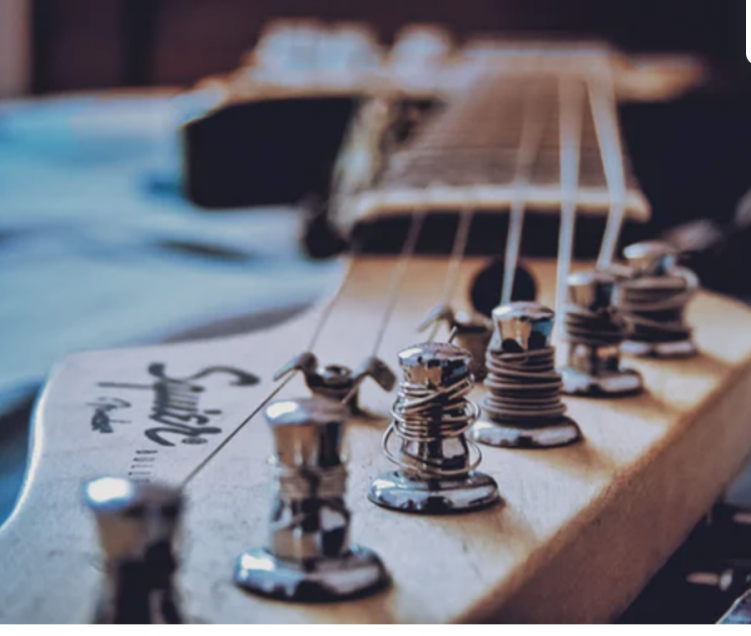Have you ever attended an orchestra concert and were mesmerized by the beautiful tunes the string instruments created? Unquestionably, string instruments produce the most exquisite sounds, enticing young musicians to learn more about them.
While you may be already familiar with the violin, the string family includes many more fantastic instruments you can opt for. Also, if you need to prepare an essay on this topic, you always can use professional writing help, and authors with impressive experience will help you. If you are interested in these instruments but they all look the same to you, we have got you covered.
Read on to learn more about the different types of string instruments.
The Violin
Let’s start with an instrument most people are familiar with, the violin. Considered the smallest of the string family, the violin produces very high-pitched sounds. The violin consists of three parts: the neck, the body, and the bow.
You use the neck of the violin to control the pitch of the instrument while you run the bow across the strings to produce music. To hold the instrument correctly, you should keep its bottom side resting on your left shoulder. This makes controlling the violin a breeze.
Since it is small, the violin is perfect for beginners who want to try a light-weight string instrument.
The Viola
Do you like how the violin looks but the high-pitched sounds it produces irk you? Then, you can go for a viola instead.
The viola looks exactly like the violin, albeit a bit bigger. While the former does not require much control, learning to play the viola can be a bit more challenging. One of the secrets of playing the viola expertly is to have the correct posture.
To produce beautiful music with this thick-stringed instrument, keep your body relaxed and knees slightly bent. Hold your viola the same way you would hold a violin but keep your grip around it relaxed to adequately control its pitch.
The Mandolin
If you want a string instrument that resembles the guitar, the mandolin is certainly a good choice. As opposed to the viola and the violin, the mandolin does not require a bow. However, you need to purchase a pick to be able to play it.
As explained by musical experts, there are mainly two types of mandolins: The A style and the F style. As the name suggests, A-style mandolins resemble the shape of the letter “A” since they have a flat design. This makes it easier for beginners to control the instrument.
On the other hand, F-style mandolins are more expensive and harder to control, making them more fit for experienced musicians.
The Cello
Step aside because the older sibling of the viola and violin is here! Thanks to its gigantic size, the cello can produce a wide array of pitches, including extremely high and low ones.
This versatility is what attracts many musicians to this instrument. Nonetheless, such a feature can also make the cello intimidating.
Experts advise new cello players to tune the instrument frequently to avoid producing off-key notes. To have full control over your cello, place your legs on either side of it, and rest the neck on your left shoulder.
The Guitar
Preferred by millions of musicians around the world, the guitar is the perfect choice for any aspiring artist. Generally, guitars have two types: acoustic and electric.
Acoustic guitars do not need to be plugged in a power source to function. Because one does not need a pick or a bow to play the guitar, beginners should go for classical models that sport nylon strings, as they are gentle on the fingers.
The steel-stringed variety, on the other hand, is better suited for experienced players. If acoustic guitars do not appeal to you, opt for an electric one instead because it gives that universally loved rock & roll vibe!
The Harp
The harp is a somewhat strange string instrument; it is very large and can sound like a piano! This mammoth of an instrument has forty-seven strings, and each produces a different note.
There are also foot pedals that are used for controlling the pitch of every string. Since the harp is extremely big, harp players have to sit down to properly control it.
The music the harp creates is very classical and has a dreamy vintage feel.
Because they are many string instruments, it might be hard to pick the best one for your taste and unique needs. Such instruments are versatile, as you can use your fingers to play some of them while others require a pick or a bow.
Whether you end up choosing the violin, viola, mandolin, or any other string instrument, the previous guide can help you make your decision. After picking your instrument, make sure to attend classes with a professional teacher to learn how to play it properly.


Have you ever attended an orchestra concert and were mesmerized by the beautiful tunes the string instruments created? Unquestionably, string instruments produce the most exquisite sounds, enticing young musicians to learn more about them.
While you may be already familiar with the violin, the string family includes many more fantastic instruments you can opt for. Also, if you need to prepare an essay on this topic, you always can use professional writing help, and authors with impressive experience will help you. If you are interested in these instruments but they all look the same to you, we have got you covered.
Read on to learn more about the different types of string instruments.
The Violin
Let’s start with an instrument most people are familiar with, the violin. Considered the smallest of the string family, the violin produces very high-pitched sounds. The violin consists of three parts: the neck, the body, and the bow.
You use the neck of the violin to control the pitch of the instrument while you run the bow across the strings to produce music. To hold the instrument correctly, you should keep its bottom side resting on your left shoulder. This makes controlling the violin a breeze.
Since it is small, the violin is perfect for beginners who want to try a light-weight string instrument.
The Viola
Do you like how the violin looks but the high-pitched sounds it produces irk you? Then, you can go for a viola instead.
The viola looks exactly like the violin, albeit a bit bigger. While the former does not require much control, learning to play the viola can be a bit more challenging. One of the secrets of playing the viola expertly is to have the correct posture.
To produce beautiful music with this thick-stringed instrument, keep your body relaxed and knees slightly bent. Hold your viola the same way you would hold a violin but keep your grip around it relaxed to adequately control its pitch.
The Mandolin
If you want a string instrument that resembles the guitar, the mandolin is certainly a good choice. As opposed to the viola and the violin, the mandolin does not require a bow. However, you need to purchase a pick to be able to play it.
As explained by musical experts, there are mainly two types of mandolins: The A style and the F style. As the name suggests, A-style mandolins resemble the shape of the letter “A” since they have a flat design. This makes it easier for beginners to control the instrument.
On the other hand, F-style mandolins are more expensive and harder to control, making them more fit for experienced musicians.
The Cello
Step aside because the older sibling of the viola and violin is here! Thanks to its gigantic size, the cello can produce a wide array of pitches, including extremely high and low ones.
This versatility is what attracts many musicians to this instrument. Nonetheless, such a feature can also make the cello intimidating.
Experts advise new cello players to tune the instrument frequently to avoid producing off-key notes. To have full control over your cello, place your legs on either side of it, and rest the neck on your left shoulder.
The Guitar
Preferred by millions of musicians around the world, the guitar is the perfect choice for any aspiring artist. Generally, guitars have two types: acoustic and electric.
Acoustic guitars do not need to be plugged in a power source to function. Because one does not need a pick or a bow to play the guitar, beginners should go for classical models that sport nylon strings, as they are gentle on the fingers.
The steel-stringed variety, on the other hand, is better suited for experienced players. If acoustic guitars do not appeal to you, opt for an electric one instead because it gives that universally loved rock & roll vibe!
The Harp
The harp is a somewhat strange string instrument; it is very large and can sound like a piano! This mammoth of an instrument has forty-seven strings, and each produces a different note.
There are also foot pedals that are used for controlling the pitch of every string. Since the harp is extremely big, harp players have to sit down to properly control it.
The music the harp creates is very classical and has a dreamy vintage feel.
Because they are many string instruments, it might be hard to pick the best one for your taste and unique needs. Such instruments are versatile, as you can use your fingers to play some of them while others require a pick or a bow.
Whether you end up choosing the violin, viola, mandolin, or any other string instrument, the previous guide can help you make your decision. After picking your instrument, make sure to attend classes with a professional teacher to learn how to play it properly.
Related Content: